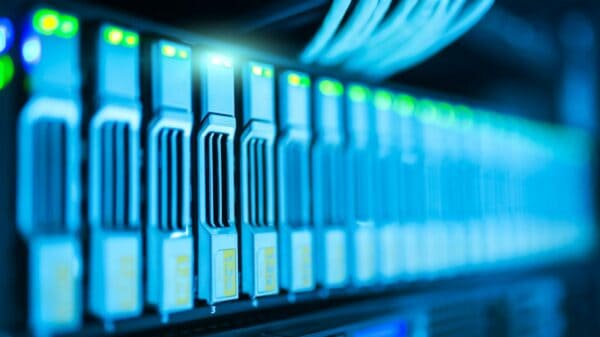As the global adoption of IoT increases in size, scale, and penetration, we are seeing new potential from the industry emerging gradually. Almost everyone now realizes the complex setup of a heterogeneous fleet of devices and platforms accessible from different touchpoints, including self-operable portals, vendors, and applications.
Manual handling of all the devices can be complex, especially when we have solutions like an IoT device management platform to take care of everything from a single window.
The scattered and distributed operational platforms can also be riskier, which can be mitigated with an IoT device management platform. With this in mind, let’s explore the further benefits of an IoT management platform.
What are IoT Devices Management Systems and Platforms?
The ability to remotely access, monitor, and control the functionality of your deployed IoT devices is known as IoT device management. There are numerous important reasons for the importance of this capability. There can be thousands of IoT devices deployed on a single network that needs constant monitoring and management.
In addition to this, the scale of your network, whether the devices are physically accessible, and how geographically spread your devices are taken into account for setting up a device management system.
IoT device management is also about maintaining and updating the device’s capabilities with firmware updates or security patches regularly to ensure they are working efficiently, securely, and in compliance.
IoT Device Management Platforms
IoT device management systems are often used by IoT specialists and operational managers to manage the organization’s device fleet. These platforms help with device authorization, collection and interpretation of reported data, real-time monitoring, and software updates.
Moreover, these platforms help reduce the burden of extensive management of the devices, making the entire network more efficient in its entirety. Going one step ahead, a device management platform can connect to different devices, retrieve information about their status, and even change the status as required. These platform management solutions are delivered as SaaS or PaaS most of the time.
Benefits of IoT Device Management Platforms
Rapid Deployment
One of the first issues most businesses face while installing IoT devices within an enclosed space is the labor shortage to operate them. The lack of understanding and knowledge makes deployment an issue.
With an IoT device management platform, anyone can deploy the devices in an enclosed space and in other locations. Individual management systems in different locations are hard to manage, not to mention the progressive costs.
To solve this, we can ship a piece of IoT device management hardware anywhere in the globe that is accessible from a device management platform. Further, a pre-trained technician can remotely manage the configuration of that device as long as it can connect to the internet.
Access Management
Access is one of the core benefits of modern technology. But unauthorized access has proven to be equally threatening. With remote access provided by a device management platform, the person handling it can disable or restrict physical access points such as USB, Ethernet, and serial connections remotely through the platform.
It is as simple as clicking a button, and anyone can grant or restrict access to critical device functionalities. They can also limit access to data from a central location by creating authorized users profiles and permissions on your device management platform.
Going one step further, several device management platforms can record and export activity logs. These help in identifying the source of a security breach (if any) and tackling it.
Production Acceleration
This benefit pertains explicitly to the industrial houses that have installed multiple devices for different in-house functions. A connected workplace means better outcomes, but it can be counterproductive because of ineffective management.
So, a device management platform meant for IoT peripherals can help manage every device remotely and seamlessly. This ensures better or higher productivity in terms of output.
Security
For some people or hackers accessing remote devices from backdoors is easy. Hence, the chances of exploiting a device’s operating system and firmware application security weaknesses are high.
In the same way that mobile devices, PCs, and tablets require software and firmware upgrades for security, IoT devices require updates from time to time to ensure that weaknesses are successfully corrected.
Previously, this was done by flashing firmware using a connected computer through USB or Ethernet; currently, an update to programs or firmware can be delivered Over-the-Air (OTA).
For these OTA updates, you will need the assistance of a device management platform.
Cost Reduction
Any sort of developer can shorten the time to market by using an IoT device. But the same can be further shortened if you are using a device management platform to manage those devices.
An IoT device management platform gives you everything you need to set up the network and start operating it right away. Furthermore, a future-oriented network architecture allows quick and scalable large-scale installations implementation.
These aspects have the potential to accelerate the growth of your IoT solution in the future. All in all, as you can simplify and automate the network systems and device management activities, it optimizes the cost, needs, and for personnel, technology, and expertise to work on the same. Thus, helping you improve the core competencies and lower costs.
Data Management & Prediction tasks
IoT devices generate tremendous amounts of data on a daily basis. More devices on the network mean more data that must be interpreted and analyzed.
Modern IoT device management platforms can help decipher and decode the collected data leading to a better understanding of everything. The high level of data management these platforms can provide is helpful for different tasks, including prediction and adaptive management.
Challenges to IoT Device Management Platforms Execution
The sheer scale where IoT devices operate is exceptionally advanced and futuristic. IoT device management platforms do make the work easier, but they are not without challenges.
Some of the hiccups you may face while implementing these solutions are;
Power usage
IoT devices take up a lot of electrical power. If they are installed in hard-to-reach places, they must get battery power. Both these aspects can prove to be a challenge.
Monitoring every device
Many IoT devices are connected to the network, and some of them also need to operate in conjunction with each other. So, the monitoring of these connected devices is also difficult and has proven to be a challenge.
Conclusion
As the expanse of IoT is advancing and moving ahead from the “proof of concept” stage, its users need an effective IoT device management system and platform to manage everything.
An IoT device management platform system provides simplified systems to manage, monitor, and control IoT devices from a remote location. They provide real-time status reports and data and interpret the same to give you actionable insights.
More importantly, modern IoT device management platforms are scalable and provide a robust system to implement IoT solutions at cost-effective prices.
Patrick R, A techno-commercial leader heading Intuz as Director of Growth With over 12 years of experience in the field of Information Technology. His experience and expertise will entice developers and business entrepreneurs with rich content on latest technology stack. Visit for more information: https://www.intuz.com/























































































































































































